Most Famous Paintings of All Time
Famous French, Italian, Dutch and American paintings are among the artwork featured in this group of the world’s most famous paintings. Beautiful paintings such as these form timeless images which stay with us forever.
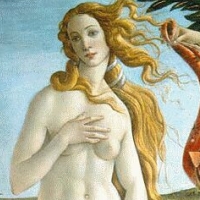 |
Sandro Botticelli Italian (1445-1510) The Birth of Venus |
This famous image shows the goddess Venus coming out of the Sea (according to some legends, Venus did not have a mother or father but was instead born of the Sea after the death of Uranus). |
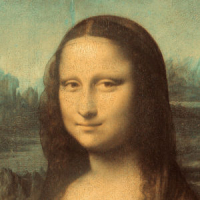 |
Leonardo Da Vinci Italian (1452-1519) Mona Lisa |
Da Vinci, Michelangelo, and Raphael are the three great Masters from the Renaissance period. This painting is likely the most famous, most controversial, and most expensive painting in the world. It is a portrait of a rich lady named Lisa Gherardini (a fact which was only known for sure in 2005). It is famous because the lady’s expression is hard to define since she doesn’t have any eyebrows or eyelashes. The painting is currently located in Paris, France at the Louvre. |
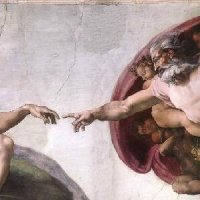 |
Michelangelo Italian (1475-1564) The Creation of Adam (from the Sistine Chapel) |
The Sistine chapel is part of the pope’s official residence in Vatican City. Michelangelo painted the 12,000 square foot ceiling with various characters from the Bible — the most famous being the image of God creating Adam in the middle. |
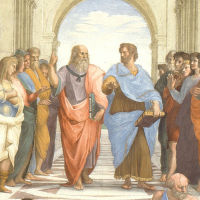 |
Raphael Italian (1483-1520) School of Athens |
This wall painting, located in the Vatican, contains pictures of many famous philosophers. Plato and Aristotle are the two in the middle. As an inside joke, Raphael based Plato’s face on fellow artist Leonardo da Vinci. He also included Michelangelo and himself elsewhere in the painting. |
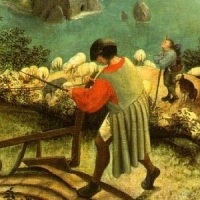 |
Pieter Bruegel Dutch (1525-1569) Landscape with the Fall of Icarus |
This painting represents man’s indifference to the suffering of others. Icarus was the main character in a Greek legend. He created wings made of feather & wax but flew too close to the sun. In the painting, Icarus is hard to find (he’s just below the big boat) and the main character in the painting is going about his work without noticing |
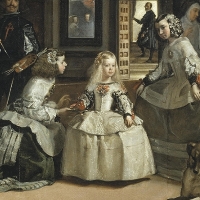 |
Diego Velazquez Spanish (1599-1660) Las Meninas |
This baroque painting is considered one of the most important of all-time. The central figure is the young Margarita Teresa of Spain but the painting also shows the artist himself, an image of the king and queen, several servants, two dwarfs, and a dog. |
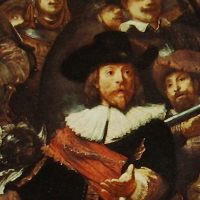 |
Rembrandt Dutch (1606-1669) The Night Watch |
Rembrandt is one of the most famous Dutch painters. This painting is huge (11 ft x 14 ft) and shows a group of soldiers leaving for a battle. Unlike earlier paintings which showed people looking stiff, this picture captures their movement. Also, the way he painted the light emphasizes the three men in the front as well as a young girl. The girl has a dead chicken hanging from her belt — a symbol that they will defeat their enemy. |
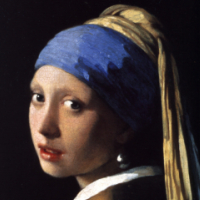 |
Johannes Vermeer Dutch (1632-1675) Girl with a Pearl Earring |
This painting is called “the Mona Lisa of the North”. Three things stand out: the girl’s intimate gaze, her white earring in the middle of the picture, and the interesting combination of colors. |
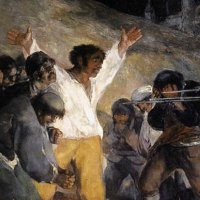 |
Francisco Goya Spanish (1746-1828) The Third of May |
This painting shows Napoleon’s attack on Spain in 1808. Prior to this, most paintings showed war as being a glorious thing. This painting shows it as being cruel and subhuman (see how the soldiers look mechanical whereas the ones being shot look full of life). |
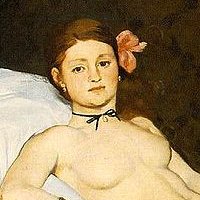 |
Edouard Manet French (1832-1883) Olympia |
This painting is an example or realism — a style that shows exactly what the eye sees. It created an uproar, not because the subject was nude, but because of the way he painted her gaze and other subtleties indicating that she was a mistress. |
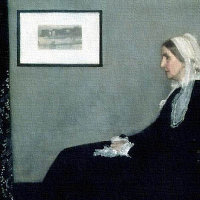 |
James Whistler American (1834-1903) Whistler’s Mother |
An example of tonalism — a style known for dark, neutral shades, this painting is officially titled, “An arrangement in Grey and Black: The Artist’s Mother”. One story says that his mother agreed to sit for the painting because the real model didn’t show up. Another says that Whistler wanted to paint the model standing up but that his mother could not do so for such an extended period so he painted her seated instead. |
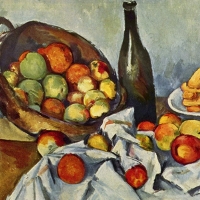 |
Paul Cezanne French (1839-1906) The Basket of Apples |
Cezanne is often said to be a bridge between 19th century impressionism (see below) and the more abstract styles of the 20th century. |
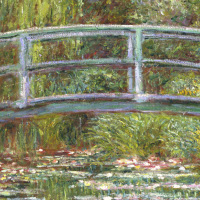 |
Claude Monet French (1840-1926) Water Lilies |
This painting is an example of impressionism — a type of painting known for its light colors and simple subjects. Monet was known for painting lillies, like the ones in this painting. |
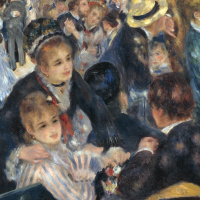 |
Pierre-Auguste Renoir French (1841-1919) Le Moulin de la Galette |
The title of this painting is French for “Pastry Cafe”. Another example of impressionism, this particular painting is one of the most expensive ever bought (for about $130 million in today’s dollars). |
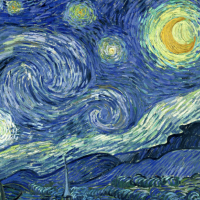 |
Vincent Van Gogh Dutch (1853-1890) Starry Night |
Vincent Van Gogh is probably one of the two or three most famous painters in history, often remembered for cutting off part of his ear and suffering from mental illness. Famous for its swirls in the sky, this painting was based on the view from Van Gogh’s bedroom and is an example of post-impressionism. |
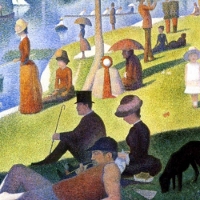 |
Georges Seurat French (1859-1891) A Sunday Afternoon on the Island of La Grande Jatte |
This painting is an example of pointillism — a technique in which many small dots combine to create an image. |
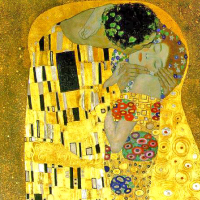 |
Gustav Klimt Austrian (1862-1918 The Kiss |
Klimt used gold leaf to make this and other paintings. This decorative style was known as Art Nouveau (French for “new art”). |
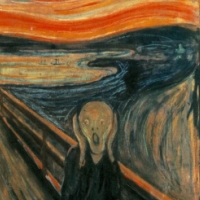 |
Edvard Munch Norwegian (1863-1944) The Scream |
One of the most familiar images in history, this painting is an example of expressionism. In this style of painting, reality is distorted in order to express emotion. Here the emotion is panic. |
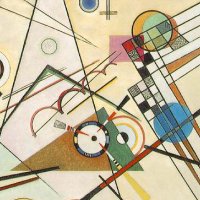 |
Wassily Kandinsky Russian (1866-1944) Composition 8 |
Kandinsky was the founder of abstract art — art that uses symbols and designs rather than real people or things. |
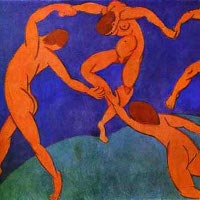 |
Henri Matisse French (1869-1954) The Dance |
This painting is an example of fauvism — a style known for its bright colors. At the time, other painters didn’t like the style and called Matisse and his friends “les fauves” (French for wild beasts). |
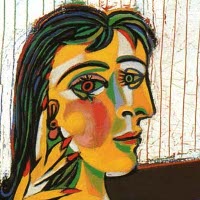 |
Pablo Picasso Spanish (1881-1973) Portrait of Dora Maar |
Picasso ranks among the top painters of all-time. He was one of the founders of cubism — a style that captures an object from different angles all at once. This painting is actually of Picasso’s lover. |
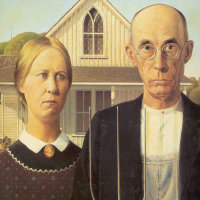 |
Grant Wood American (1891-1942) American Gothic |
This is likely the most famous American painting of all-time and has been the basis for many parodies. “Gothic” (an architectural style used for churches) refers to the top window of the house in the background. During the Great Depression, this painting became a symbol of the hard-working and determined American people. Note that the pitchfork is mirrored on the man’s overalls. |
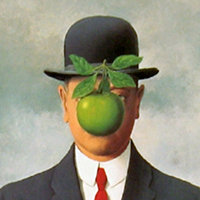 |
Rene Magritte Belgian (1898-1967) The Son of Man |
This painting is an example of surrealism — a stlye that captures strange dream-like feelings. Magritte explained this painting as follows: “Everything we see hides another thing, we always want to see what is hidden by what we see. There is an interest in that which is hidden and which the visible does not show us.” |
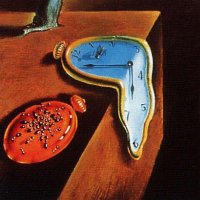 |
Salvador Dali Spanish (1904-1989) The Persistence of Memory |
This painting is another example of surrealism, distorting the ideas of hard and soft. |
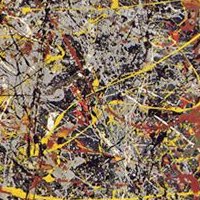 |
Jackson Pollock American (1912-1956) No. 5, 1948 |
Pollock was known for using his unique drip technique to create what is called abstract expressionist art. This particular painting is the most expensive painting ever sold (at over $140 million dollars). |
